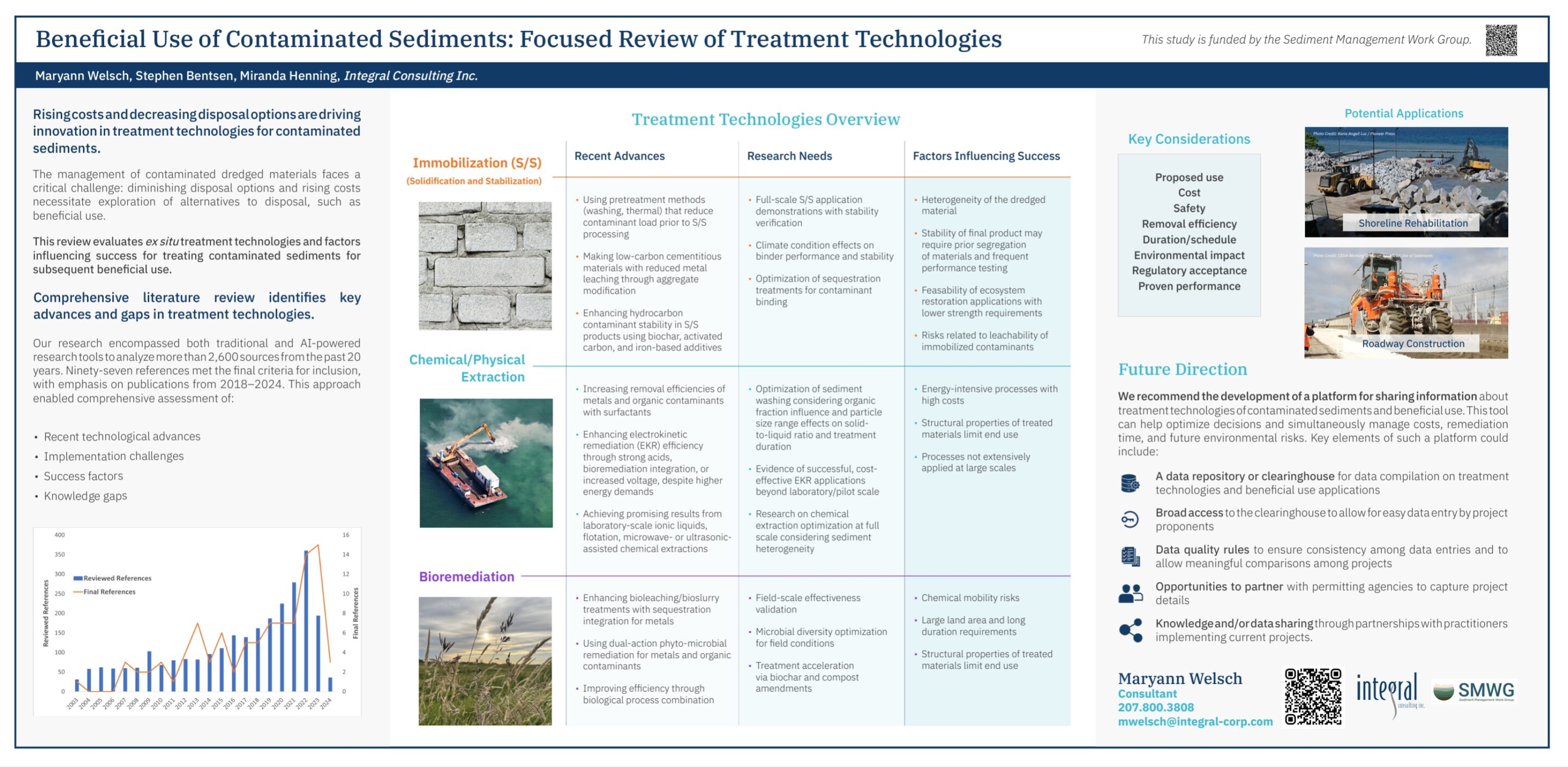
Ms. Maryann Welsch is an environmental scientist with more than 20 years of experience working with industrial clients of regulated community and government entities to assess and reduce environmental risks and damage. She has provided strategic support and technical analyses on a variety of chemicals, including per- and polyfluoroalkyl substances (PFAS), petroleum compounds, dioxins, PCBs, PAHs, and metals to help clients and regulators understand the significance of ecological exposures and the potential for risks. As a project manager, Ms. Welsch collaborates with multidisciplinary project teams to deliver results in support of remedial investigations, feasibility studies, ecological risk assessments, natural resource damage assessments (NRDAs), ecosystem restoration, sediment management, and expert reporting.
M.S., Natural Resources, Cornell University, Ithaca, New York, 2001
B.S., Biology, Villanova University, Villanova, Pennsylvania, 1997
Hazardous Waste Operations and Emergency Response 40‑Hour Certification (2002; annual refreshers)
First Aid and CPR (2026)
Society for Environmental Toxicology and Chemistry
Ecological Society of America
Maryann Welsch Consultant
Ms. Maryann Welsch is an environmental scientist with more than 20 years of experience working with industrial clients of regulated community and government entities to assess and reduce environmental risks and damage. She has provided strategic support and technical analyses on a variety of chemicals, including per- and polyfluoroalkyl substances (PFAS), petroleum compounds, dioxins, PCBs, PAHs, and metals to help clients and regulators understand the significance of ecological exposures and the potential for risks. As a project manager, Ms. Welsch collaborates with multidisciplinary project teams to deliver results in support of remedial investigations, feasibility studies, ecological r...
Ms. Maryann Welsch is an environmental scientist with more than 20 years of experience working with industrial clients of regulated community and government entities to assess and reduce environmental risks and damage. She has provided strategic support and technical analyses on a variety of chemicals, including per- and polyfluoroalkyl substances (PFAS), petroleum compounds, dioxins, PCBs, PAHs, and metals to help clients and regulators understand the significance of ecological exposures and the potential for risks. As a project manager, Ms. Welsch collaborates with multidisciplinary project teams to deliver results in support of remedial investigations, feasibility studies, ecological risk assessments, natural resource damage assessments (NRDAs), ecosystem restoration, sediment management, and expert reporting.


